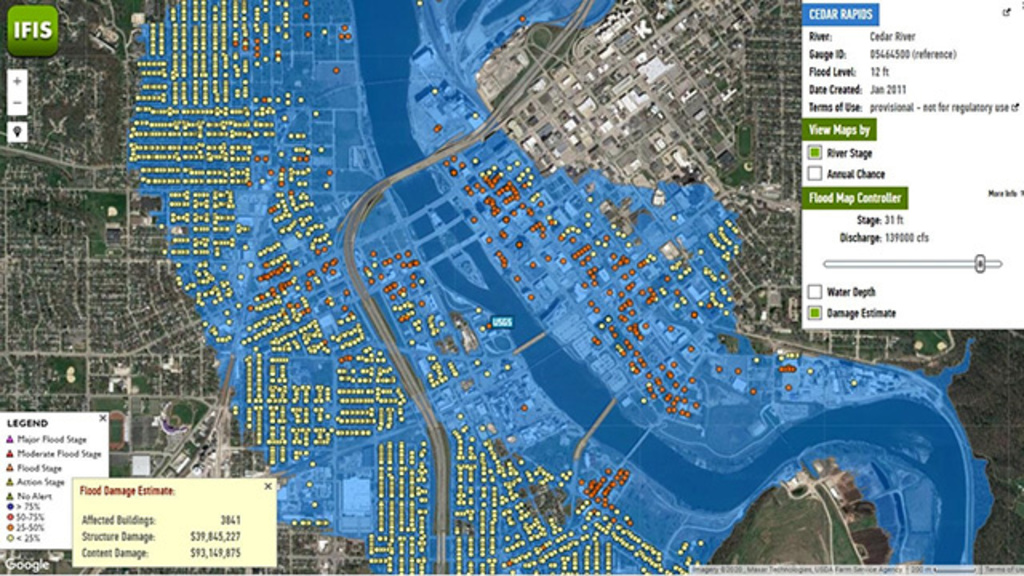Articles from April 2022

UI receives $21 million to better predict water-related hazards
Monday, April 18, 2022
The University of Iowa will be a key contributor to the National Oceanic and Atmospheric Administration’s $360 million consortium to improve the United States’ ability to predict water-related hazards and better manage its water.

University of Iowa part of $360 million national flood consortium
Thursday, April 7, 2022
The federal government has chosen the University of Iowa to be part of a $360 million national consortium to improve flood prediction and water quality tracking across the country.

University of Iowa key partner in $360M national water consortium
Wednesday, April 6, 2022
Iowa will receive $21 million during the next five years as a partner in the Cooperative Institute for Research to Operations in Hydrology (CIROH), funded by the National Oceanic and Atmospheric Administration (NOAA). The national center will be led by the Alabama Water Institute at the University of Alabama.

University of Iowa study shows comprehensive assessment of flood risk for cropland in the state
Wednesday, April 6, 2022
Researchers found that nearly 450,000 acres of cropland are located in areas with a 50% chance of flooding in a given year. They also found a staggering average of $230 million in crop losses per year due to farming that takes place in flood-prone areas.

UI researchers create map showing flood risk for Iowa farmland
Tuesday, April 5, 2022
The study from IIHR–Hydroscience and Engineering at the University of Iowa is the first to detail the flood risk to farmland statewide. The researchers used flood maps developed at the Iowa Flood Center, and incorporated data from the Federal Emergency Management Agency (FEMA) and the U.S. Department of Agriculture to create the crop flood-risk analysis.